18th Century George III Mahogany Quarter Striking Automation Bracket Clock by Stephen Rimbault
Sold
Request Information
Follow Us
18th Century George III Mahogany Quarter Striking Automation Bracket Clock by Stephen Rimbault
By Stephen Rimbault
The impressive mahogany case has a bell top and is surmounted by four pineapple finials on the corners and an additional finial to the centre. There are carrying handles to each side as well as circular silk-backed pierced brass sound frets. The case is glazed on all sides so that the complex movement is almost entirely visible. It rests on four brass ogee bracket feet and brass mouldings to both the top and base.
The extremely unusual partly painted shaped brass dial has a silvered Roman chapter ring with a recessed signature plaque, Stpn Rimbault London, and a date aperture in the matted centre. In the corners are fine pierced gilt brass spandrels. The time is indicated by a pair of very fine pierced blued-steel hands on the Roman chapter ring with Arabic five-minute and minute divisions.
The special, extremely rare and charming feature of the clock, is that above the dial there is a painted automaton depicting four eighteenth-century dress musicians, one playing the harpsichord, two other string instruments and a conductor. The hand of the harpsichord player, the bows of the string instruments players and the conductor’s baton are constantly moving with the going train. Fabulous!
The triple gut-fusee spring-driven eight-day movement has a going train with its original verge escapement and short pendulum with knife-edge suspension. The quarters are chimed on a nest of eight bells with eight hammers, on the hour followed by the hour on an additional bell. In addition, the striking can be repeated at will by pulling a cord to the side. The backplate is elaborately engraved around the maker’s signature Stpn Rimbault London.
Note on the maker
As his name suggests Stephen Rimbault was of Huguenot descent. He specialised in musical and/or automaton clocks in the second and third quarters of the eighteenth century. There is a most impressive clock by his hand in the Ashmolean Museum in Oxford. His brother Paul was also a clockmaker, of whom we also have a clock in our collection, albeit of a much more moderate style.
Condition
Good. Wear consistent with age and use.
Dimensions
Height: 21.66 in. (55 cm)
Width: 11.42 in. (29 cm)
Depth: 7.68 in. (19.5 cm)
Literature
Brian Loomes, Watchmakers and Clockmakers of the World, London, 2006, p. 656.
PREVIOUSLY SOLD
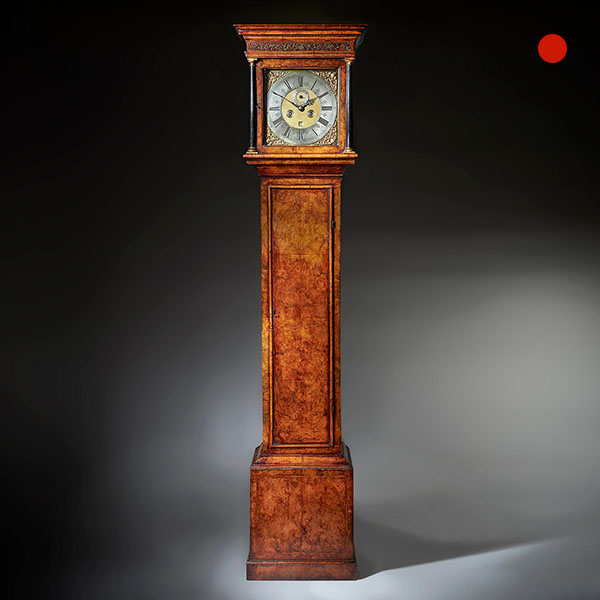
A Fine 18th-century Queen Anne Burr Walnut Eight-Day Longcase Clock
A Fine 18th-century Queen Anne Burr Walnut Eight-Day Longcase Clock Sold Follow UsA Fine 18th-century Queen Anne Burr Walnut Eight-Day Longcase Clock A superb early 18th-century eight-day Queen Anne longcase clock by the famous maker...
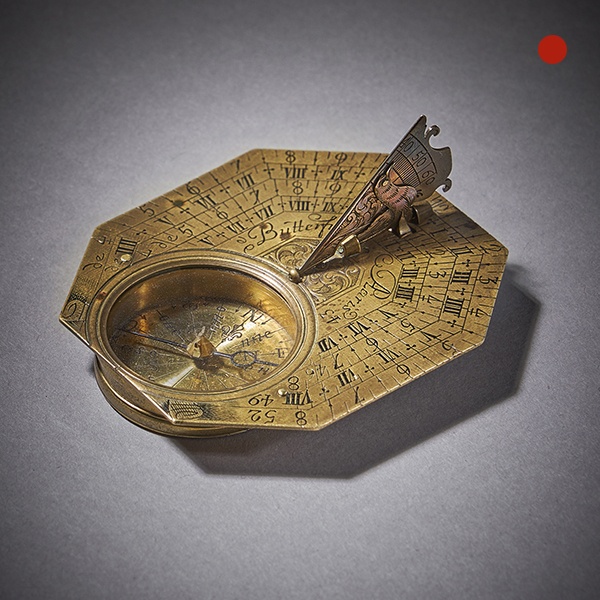
Fine Brass Pocket Sundial and Compass by Michael Butterfield Paris, circa 1700
Fine Brass Pocket Sundial and Compass by Michael Butterfield Paris Sold Follow UsFine Brass Pocket Sundial and Compass by Michael Butterfield Paris A fine brass Anglo-French octagonal pocket sundial with compass by Michael Butterfield, circa...
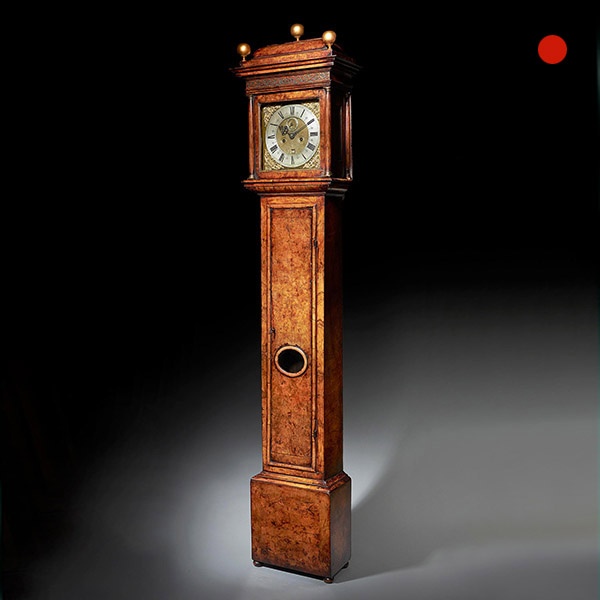
17th Century William and Mary Eight Day Burr Walnut Longcase Clock, John Martin
17th Century William and Mary Eight Day Burr Walnut Longcase Clock, John Martin Sold Follow Us17th Century William and Mary Eight Day Burr Walnut Longcase Clock, John Martin The attractive burr walnut-veneered oak case is of classic design...

18th Century German Equinoctial Pocket Sundial and Compass by Ludwig Theodor
18th Century German Equinoctial Pocket Sundial and Compass by Ludwig Theodor SOLD Follow Us18th Century German Equinoctial Pocket Sundial and Compass by Ludwig Theodor From the first quarter of the 18th century - a German brass equinoctial...
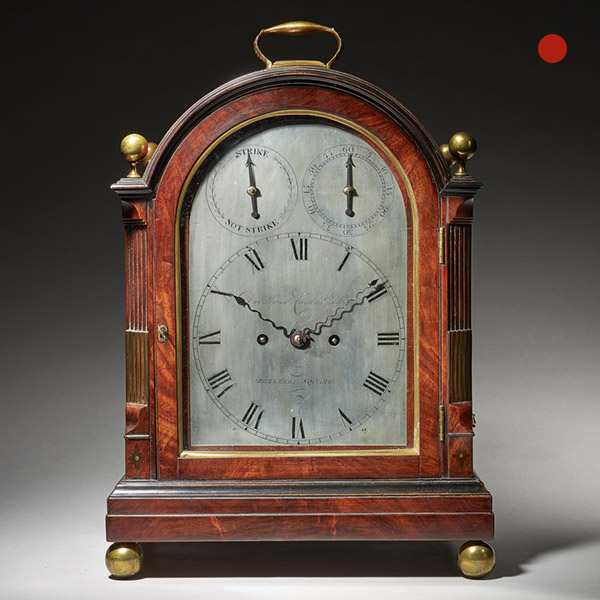
Fine George III Eight-Day Striking Mahogany Bracket Clock with Trip Repeat
Fine George III Eight-Day Striking Mahogany Bracket Clock with Trip Repeat SOLD Follow UsFine George III Eight-Day Striking Mahogany Bracket Clock with Trip Repeat A fine George III eight-day striking mahogany bracket clock with trip repeat...

Fine 17th Century Charles II Spring Driven Table Clock by Deodatus Threlkeld
Fine 17th Century Charles II Spring Driven Table Clock by Deodatus Threlkeld SOLD Follow UsFine 17th Century Charles II Spring Driven Table Clock by Deodatus Threlkeld The eminent maker Deodatus Threlkeld (1658-1732) was an apprentice of...

A Fine 18th-century Queen Anne Burr Walnut Eight-Day Longcase Clock
A Fine 18th-century Queen Anne Burr Walnut Eight-Day Longcase Clock Sold Follow UsA Fine 18th-century Queen Anne Burr Walnut Eight-Day Longcase Clock A superb early 18th-century eight-day Queen Anne longcase clock by the famous maker...

Fine Brass Pocket Sundial and Compass by Michael Butterfield Paris, circa 1700
Fine Brass Pocket Sundial and Compass by Michael Butterfield Paris Sold Follow UsFine Brass Pocket Sundial and Compass by Michael Butterfield Paris A fine brass Anglo-French octagonal pocket sundial with compass by Michael Butterfield, circa...

17th Century William and Mary Eight Day Burr Walnut Longcase Clock, John Martin
17th Century William and Mary Eight Day Burr Walnut Longcase Clock, John Martin Sold Follow Us17th Century William and Mary Eight Day Burr Walnut Longcase Clock, John Martin The attractive burr walnut-veneered oak case is of classic design...

18th Century German Equinoctial Pocket Sundial and Compass by Ludwig Theodor
18th Century German Equinoctial Pocket Sundial and Compass by Ludwig Theodor SOLD Follow Us18th Century German Equinoctial Pocket Sundial and Compass by Ludwig Theodor From the first quarter of the 18th century - a German brass equinoctial...

Fine George III Eight-Day Striking Mahogany Bracket Clock with Trip Repeat
Fine George III Eight-Day Striking Mahogany Bracket Clock with Trip Repeat SOLD Follow UsFine George III Eight-Day Striking Mahogany Bracket Clock with Trip Repeat A fine George III eight-day striking mahogany bracket clock with trip repeat...

Fine 17th Century Charles II Spring Driven Table Clock by Deodatus Threlkeld
Fine 17th Century Charles II Spring Driven Table Clock by Deodatus Threlkeld SOLD Follow UsFine 17th Century Charles II Spring Driven Table Clock by Deodatus Threlkeld The eminent maker Deodatus Threlkeld (1658-1732) was an apprentice of...
YOU MAY ALSO LIKE
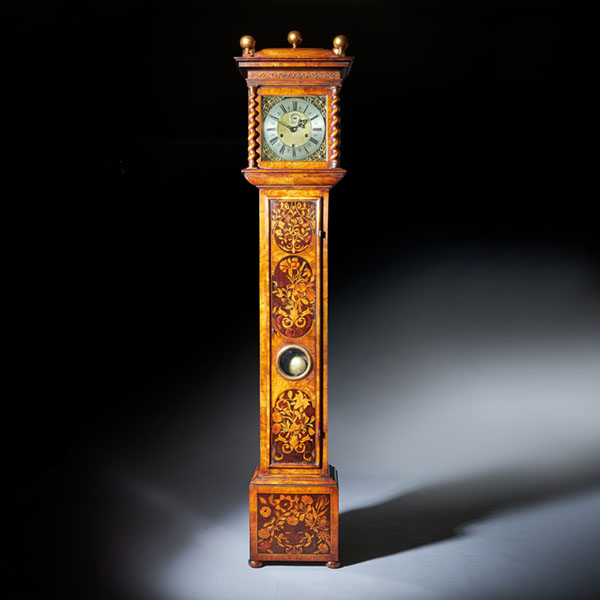
17th Century Charles II Month Going 10″ Marquetry Longcase Clock by John Wise
A superb Charles II month duration floral marquetry longcase clock by the well-known maker John Wise, c. 1680-85. Measure: 10" Follow UsA superb Charles II month duration floral marquetry longcase clock by the well-known maker John Wise, c....
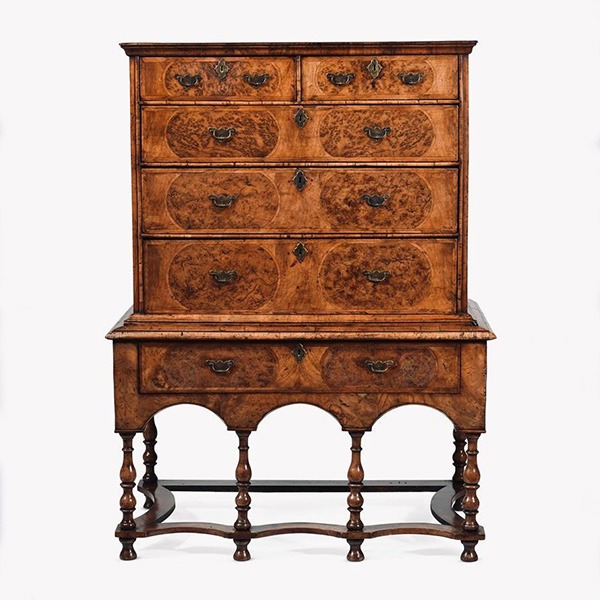
William and Mary 17th Century Walnut and Pollard Oak Chest on Stand
William and Mary 17th Century Walnut and Pollard Oak Chest on Stand £12,900Follow UsWilliam and...

A Rare 18th Century George II Carved Cut Gesso and Giltwood Mirror, Circa 1730
A Rare 18th Century George II Carved Cut Gesso and Giltwood Mirror, Circa 1730 £28,000Follow UsA...
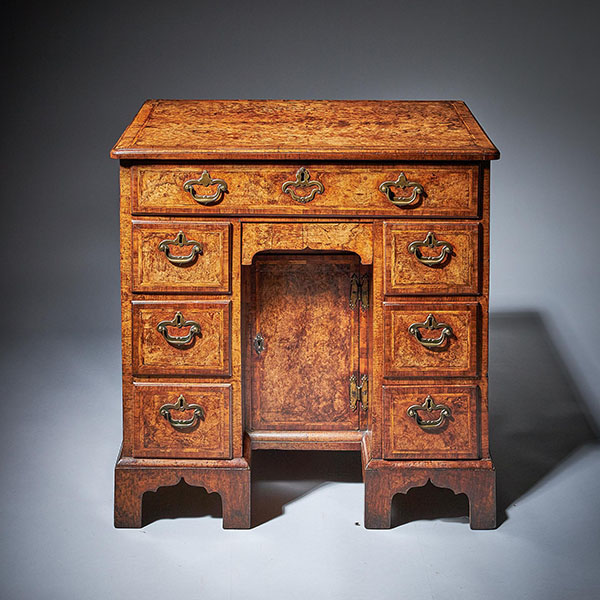
Rare Burr Walnut George II 18th Century Kneehole Desk, circa 1730-1740. England
Rare Burr Walnut George II 18th Century Kneehole Desk, circa 1730-1740. England £28,900Follow UsRare Burr Walnut George II 18th Century Kneehole Desk, circa 1730-1740. England Rare Burr Walnut George II 18th Century Kneehole Desk / Bachelor's...

A Fine 17th Century William and Mary Kingwood Strongbox or Coffre Fort, Circa 1690
A Fine 17th Century William and Mary Kingwood Strongbox or Coffre Fort, Circa 1690 £10,900Follow...

A Fine George III Chippendale Mahogany Dumb Waiter, Circa 1760 England
A Fine George III Chippendale Mahogany Dumb Waiter, Circa 1760 England. [wpforms_selector form_id="11387" show_title="on" _builder_version="4.23.1" _module_preset="default" hover_enabled="0" global_colors_info="{}"...

17th Century Charles II Month Going 10″ Marquetry Longcase Clock by John Wise
A superb Charles II month duration floral marquetry longcase clock by the well-known maker John Wise, c. 1680-85. Measure: 10" Follow UsA superb Charles II month duration floral marquetry longcase clock by the well-known maker John Wise, c....

William and Mary 17th Century Walnut and Pollard Oak Chest on Stand
William and Mary 17th Century Walnut and Pollard Oak Chest on Stand £12,900Follow UsWilliam and...

A Rare 18th Century George II Carved Cut Gesso and Giltwood Mirror, Circa 1730
A Rare 18th Century George II Carved Cut Gesso and Giltwood Mirror, Circa 1730 £28,000Follow UsA...

Rare Burr Walnut George II 18th Century Kneehole Desk, circa 1730-1740. England
Rare Burr Walnut George II 18th Century Kneehole Desk, circa 1730-1740. England £28,900Follow UsRare Burr Walnut George II 18th Century Kneehole Desk, circa 1730-1740. England Rare Burr Walnut George II 18th Century Kneehole Desk / Bachelor's...

A Fine 17th Century William and Mary Kingwood Strongbox or Coffre Fort, Circa 1690
A Fine 17th Century William and Mary Kingwood Strongbox or Coffre Fort, Circa 1690 £10,900Follow...

A Fine George III Chippendale Mahogany Dumb Waiter, Circa 1760 England
A Fine George III Chippendale Mahogany Dumb Waiter, Circa 1760 England. [wpforms_selector form_id="11387" show_title="on" _builder_version="4.23.1" _module_preset="default" hover_enabled="0" global_colors_info="{}"...










